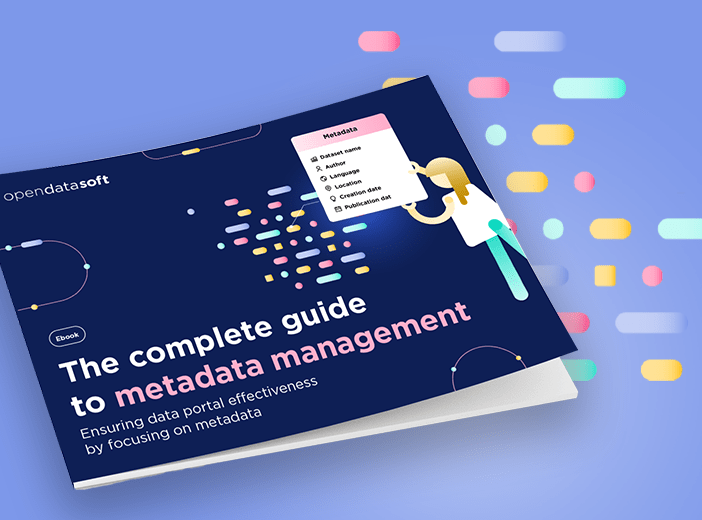Scaling data sharing through data management best practices

The DAMA-Data Management Body of Knowledge (DAMA-DMBOK) outlines the principles, framework and vocabulary needed to successfully manage data and use it to support business objectives. Our blog explains what it is and how it helps CDOs when creating and implementing their strategy.
The first Chief Data Officer (CDO) was only appointed in 2002, meaning the role is still relatively new in many organizations. As a developing profession being able to access and share best practices and processes is therefore key to success. The Data Management Association (DAMA) exists to help CDOs, and all those working with data, advancing the concepts and practices related to managing data in support of business strategy. It encourages best practice by bringing together practitioners and providing them with the right resources to use within their roles.
A key part of this is the DAMA-Data Management Body of Knowledge (DAMA-DMBOK), which has become the authoritative reference book on data management, detailing its challenges and how to successfully overcome them. In this blog we explore the DAMA-DMBOK and outline how it helps CDOs drive data sharing success.
Understanding the DAMA-DMBOK framework
There are three pillars at the heart of the DAMA-DMBOK, which is now in its second edition:
- A set of guiding principles that can be applied to data management within organizations, including inside specific functional areas
- A functional framework to implement and standardize best practice data management, including around processes, methods, models, roles, metrics and deliverables
- A common vocabulary for data management concepts, providing a unified language for CDOs and data professionals in their roles
The principles behind data management
There are 13 guiding principles set out in the book:
- Data is an asset with unique properties – and like all assets should be harnessed to drive business benefits
- The value of data can be and should be expressed in economic terms – every data project should therefore drive business ROI
- Managing data means managing the quality of data – without guaranteeing data quality, it will not be used or useful to the business
- It takes metadata to manage data – data needs to be clearly and correctly described if it is to be successfully understood, managed and shared
- It takes planning to manage data – it cannot be ad hoc, but requires strong processes and clear frameworks
- Data management is cross-functional and requires a range of skills and expertise – it has to involve different business roles and not be limited solely to technical teams
- Data management requires an enterprise perspective – it cannot be siloed and must cover the entire organization
- Data management must account for a range of perspectives – it has to meet the needs of everyone in the organization, whether technical or non-technical
- Data management is data lifecycle management – it has to cover the end-to-end lifecycle of data, from creation/collection through usage to archiving and deletion
- Different types of data have different lifecycle requirements – there is no “one size fits all” approach to data
- Managing data includes managing risks associated with data – these include safeguarding against security, compliance and legal/reputational issues
- Data management requirements must drive information technology decisions – technology infrastructure must support good practice around data management
- Effective data management requires leadership commitment – it has to be led from the top, with buy-in from senior management
A core framework for data management
Based on these principles, the DAMA-DMBOK framework covers 11 key areas, providing best practices and approaches for each of them:
Data architecture
Designing, creating and managing a data stack that actively supports seamless data flows, with a focus on integration, quality, and accessibility for all potential users.
Data modeling and design
Ensuring that data structures and the relationships between data are defined and designed to support business processes and objectives, rather than simply being technically-driven.
Data storage and operations
Storing data across the organization and in the cloud through processes that ensure efficiency, security, and regulatory compliance, all while underpinning high performance and data availability.
Data security
Protecting data from unauthorized internal or external access, such as through strong security infrastructure, granular access management and robust monitoring processes.
Data integration and interoperability
Ensuring that data can be easily shared and combined between different systems, and made available to all employees who need it.
Document and content management
Being able to process and manage all types of data, whether structured or unstructured, in order to make it easily available across the business.
Data warehousing and business intelligence
Strategies and tactical processes that enrich and make available data to enable easy analysis that supports improved, better-informed decision-making for all.
Reference and Master Data
Ensuring consistency by setting and adopting reference and master data standards, providing a foundation for seamless data sharing.
Metadata management
Defining how data is described and then capturing, storing, managing and enforcing metadata standards to improve understanding and interoperability.
Data quality management
Building trust by putting in place processes to ensure that data is reliable, accurate, timely and consistent.
Data governance
All of these areas feed into robust, effective data governance, built on policies, standards and infrastructure that set out how data is handled, managed and used across the organization, from collection to sharing and usage.
Additionally, the second edition of the DAMA-DMBOK includes chapters on the organizational side of the CDO role. It sets out best practices around how a data management team should be structured, what roles should be represented and the skills required. Importantly it explains data management in the wider organizational context, outlining how change management programs can be used to increase the spread of data usage, data sharing and data democratization to build a successful data culture.
Six steps to implementing the DAMA-DMBOK framework
There is a huge amount of useful information in the 600 pages of the DAMA-DMBOK, enabling organizations in every sector to improve their data management and turn their information into value. This is typically a six stage process:
1. Assess current data management maturity
To begin, CDOs should evaluate the current maturity level of their data management practices across the 11 areas outlined above. The book includes a full chapter on how to run a comprehensive, standards-based Data Management Maturity Assessment.
2. Highlight areas for improvement
By analyzing their maturity assessment, CDOs can understand how advanced their practices currently are, and where they need to take action to ensure they are aligned with DAMA-DMBOK principles.
3. Create an implementation plan
To ensure success, it is vital to take a measured approach to adopting DAMA-DMBOK best practices. CDOs should understand which areas will have the biggest impact on overall data management, and focus on these first, as part of a full roadmap with clear milestones.
4. Build a team and define roles
Data management is a complex process, and requires a range of skills and roles. CDOs should set out a structure for data management across the organization, defining roles and appointing a full team that includes data stewards from across the business, data architects, and data governance officers.
5. Upskill your team with training and support
Everyone involved in data management needs to understand the framework you are using, so ensure they have been fully trained on the DAMA-DMBOK approach. Provide them with resources and training to upskill and engage them.
6. Implement comprehensive monitoring processes
Ensure you are on-track with adopting DAMA-DMBOK practices by assessing your progress across the different areas, and use this monitoring to optimize your program and better meet your goals.
The importance of the data marketplace to the DAMA-DMBOK framework
Adopting or customizing a data management framework, such as DAMA-DMBOK, is an essential foundation to turning data into value. As the framework explains, it is vital that data management is aligned with business strategy and objectives, enabling everyone to successfully harness data in their roles. Centralized data marketplaces deliver this ROI and provide secure data access, collecting the organization’s data and making it available through an intuitive experience that builds trust in information through standardized metadata, a clear vocabulary and the ability for users to seamlessly connect to data owners. Building on best practice, data marketplaces democratize data sharing and make it a central part of business operations across the organization.
Opendatasoft’s data marketplace solution delivers the technology required to successfully operationalize your data management strategy. Get in contact with us to find out more or book a personalized demo.

Well-structured metadata is crucial to enabling data to be found and used with confidence within organizations and ecosystems. It is central to effective data sharing and reuse. At Opendatasoft our mission is to accelerate data democratization, ensuring that everyone has access to easily understandable information in their working and home lives. Our data portal solution enables data democratization by centralizing all of an organization’s data assets and making it available to all internal and external users in a seamless, intuitive way, without requiring specialist skills or support.


